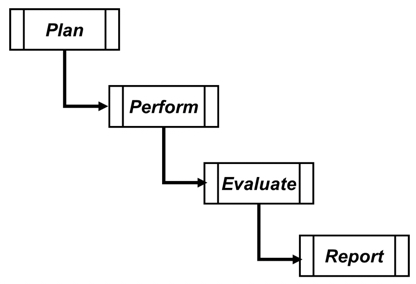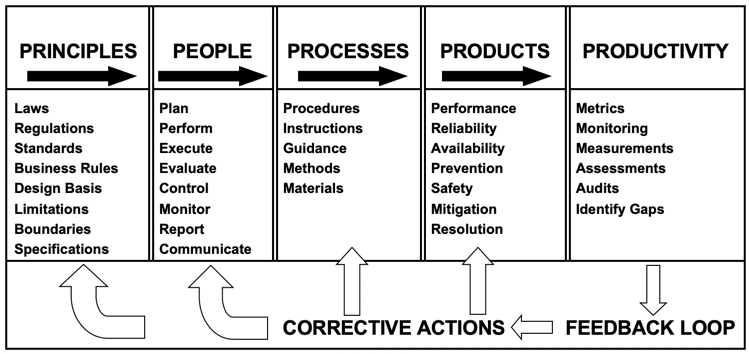You can use the methods I describe below to learn how to holistically think through root cause problems that are not just a component failure, but also process failures.
We cannot solve our problems with the same thinking we used when we created them. – Albert Einstein
I’m going to share with you a rigorous evaluation model that I personally use and would encourage any development team to implement as a mechanism to identify, resolve and prevent problems. This model works extremely well in an Agile and DevOps environment as a way to help team members prevent introducing or repeating problems during the development and deployment lifecycle.

When evaluating observations made, you should consider gaps, issues, concerns and problems to determine answers to the following questions:
- What is the problem?
- Were there violations of business rules, regulations, standards, procedures, or requirements?
- What is the extent of the condition?
- What were the causes?
- What is the extent of the cause?
- What were the corrective actions and were they adequate?
- What were the significance and consequences relating to the observations?
Evaluating the Problem Identification and Resolution
As an evaluator, you must look at the problem identification and resolution through a corrective action program (CAP) implementation or evaluate the problem with the Subject Matter Expert (SME). This mandates developing your own expertise to do the following:
- identify the findings,
- determine the extent of the condition,
- evaluate the causes,
- determine the extent of the cause,
- evaluate the adequacy of the corrective actions,
- evaluate the team culture,
- evaluate the effectiveness reviews, and
- evaluate the adequacy of the corrective action implementation.
The following method is one of many evaluation models which can be used help guide the subject matter expert in the problem identification and resolution. This Systematic Process Evaluation Model can be used to improve the depth and rigor of your analysis by helping to identify significant quality gaps and their root and contributing causes.
Systematic Evaluation Process Model Flow

The truth is that most complex organizations or programs can be accurately distilled down into the above basic model.
The above model can be inspected and assessed adequately by simply asking the following questions repeatedly until the gaps become revealed by comparison of each element of the model against the standards of excellence:
- who,
- what,
- why,
- when,
- where,
- how,
- what kind of, and
- to what extent.
Ask these questions repeatedly until the performance gaps are revealed or until you are thoroughly convinced that the area of the above process under review is adequate and you can move to the next area.
Another simple but valuable truth is that there are certain universal principles that must be implemented and evaluated for a comprehensive understanding of the gap causes.
People must have the freedom to organize, manage, and operate within an accurate and precise design, in a responsible manner, with and through appropriate authority, while accepting proper ownership, with the willingness to suffer (if need be) in order to do what is right each day. If implemented well, with integrity, this Systematic Process Evaluation Model offers the highest probability of successfully achieving excellence.
“A clever person solves a problem. A wise person avoids it.” – Albert Einstein
Evaluating the Root Cause or Other Causes
Significant weaknesses in a team’s actions to address a performance issue do not provide the confidence that the problem is being resolved. This could stem from poor evaluation of the root causes, failure to determine the extent of the performance issue, or lack of the actions taken or planned to correct the issue.
The following guidance can be used to evaluate and provide assurance that the objectives are met for each of the issues:
- The problem has been adequately identified
- The root and contributing causes are adequately identified.
- The extent of the condition is adequately identified.
- The extent of the cause is adequately identified.
- The team culture causes or significant contributors are adequately identified.
- The corrective actions are sufficient to address the root and contributing causes and to prevent recurrence.
Conclusion
The team’s response to an evaluation should address the reason for the problem, corrective actions that have been taken and the achieved results, corrective actions that will be taken, and the date when full compliance was or will be achieved. The adequacy of the corrective actions should be reviewed in accordance with the guidance above to determine if they address the root cause.
When this model is applied properly and the true root cause identified, you can ensure proper actions have been taken to prevent the issue from happening again. This is why I would encourage you to make it an integral part of the DevOps process to properly identify and address the root cause of any issues. This will establish a pattern of turning a failure into a success by minimizing risk and improving the reliability of any application.





